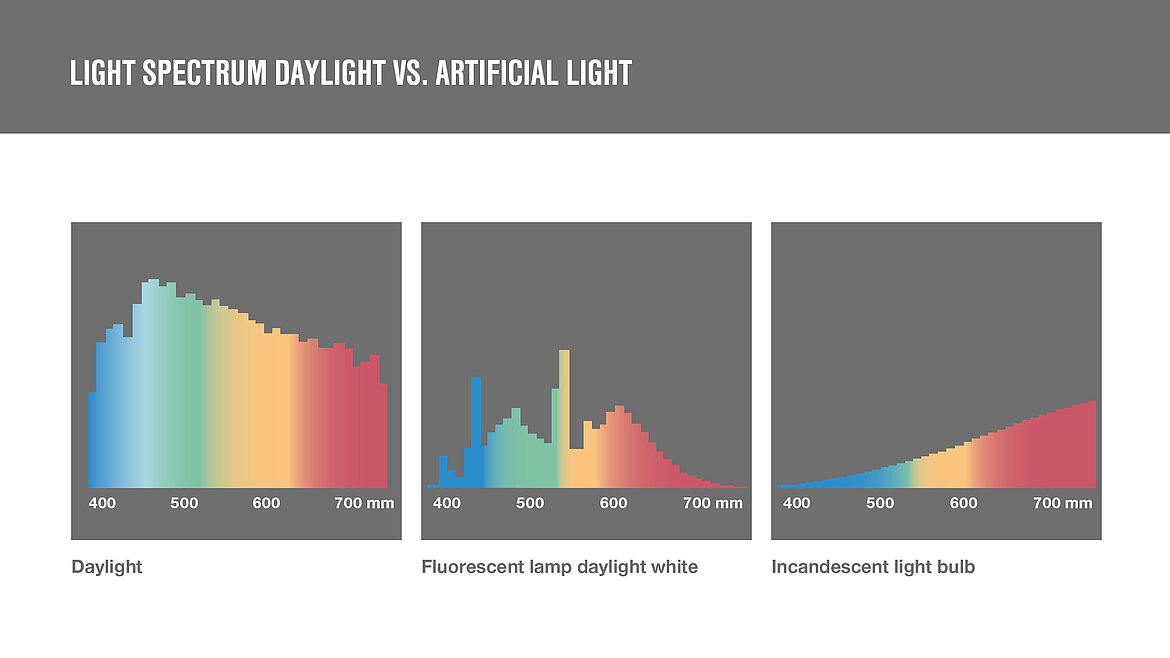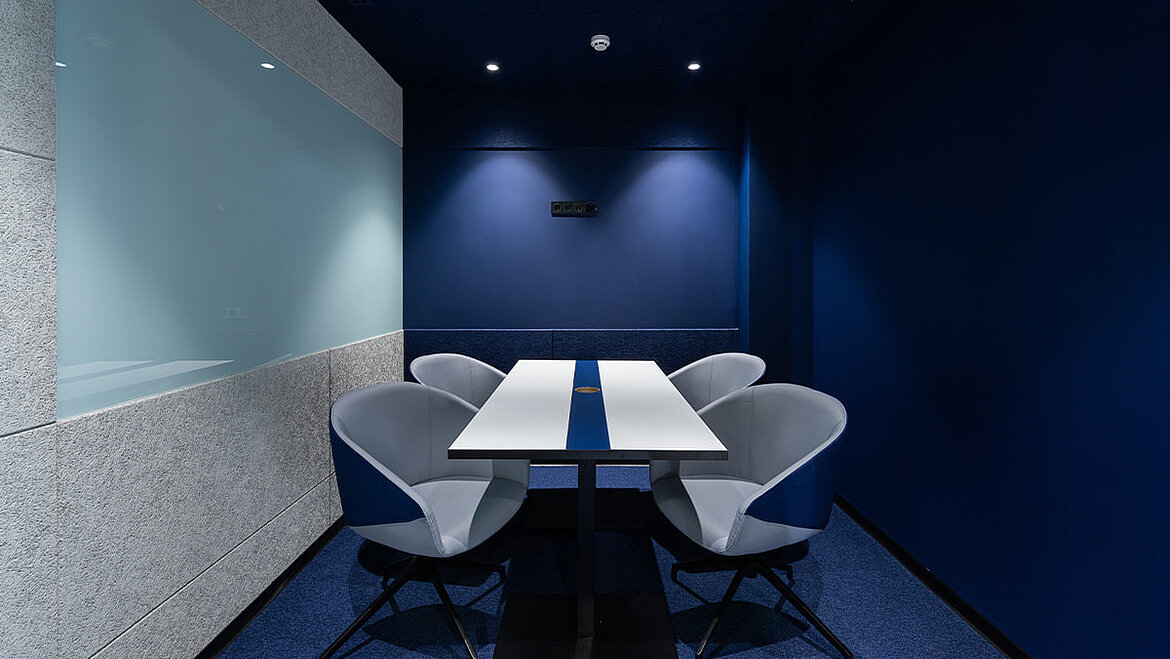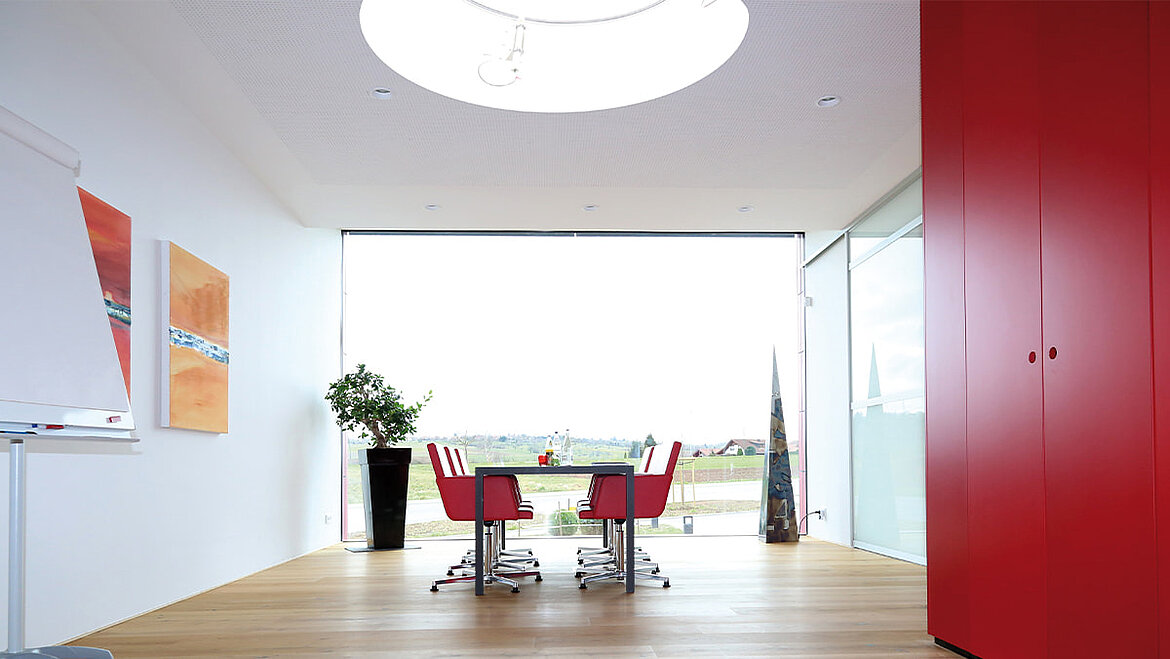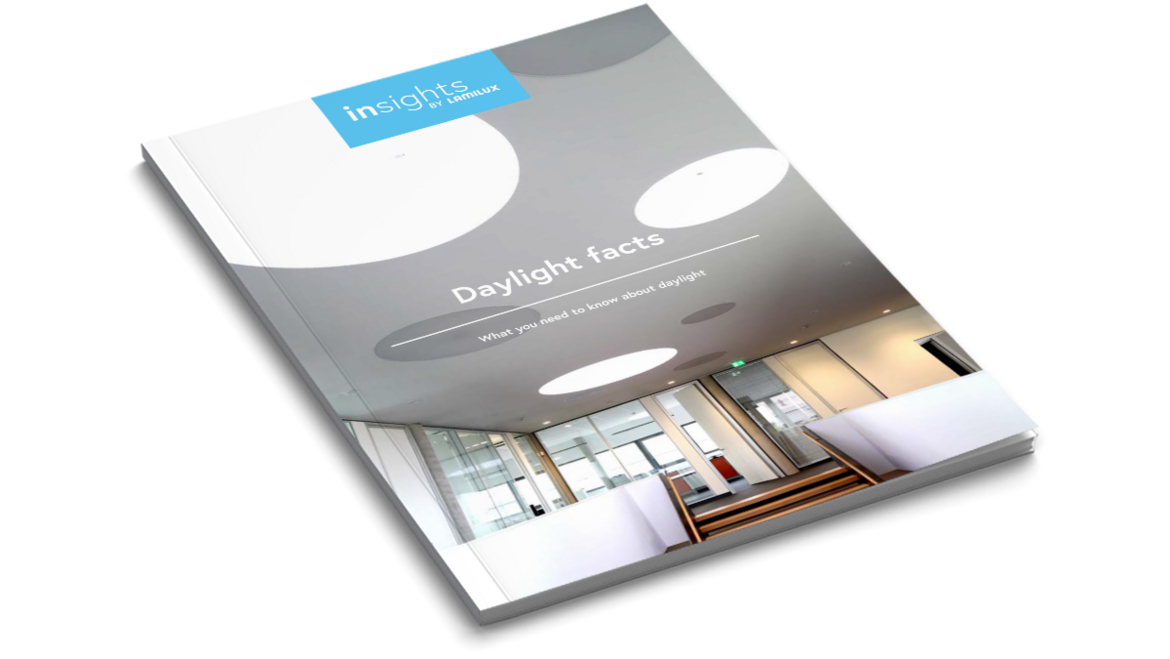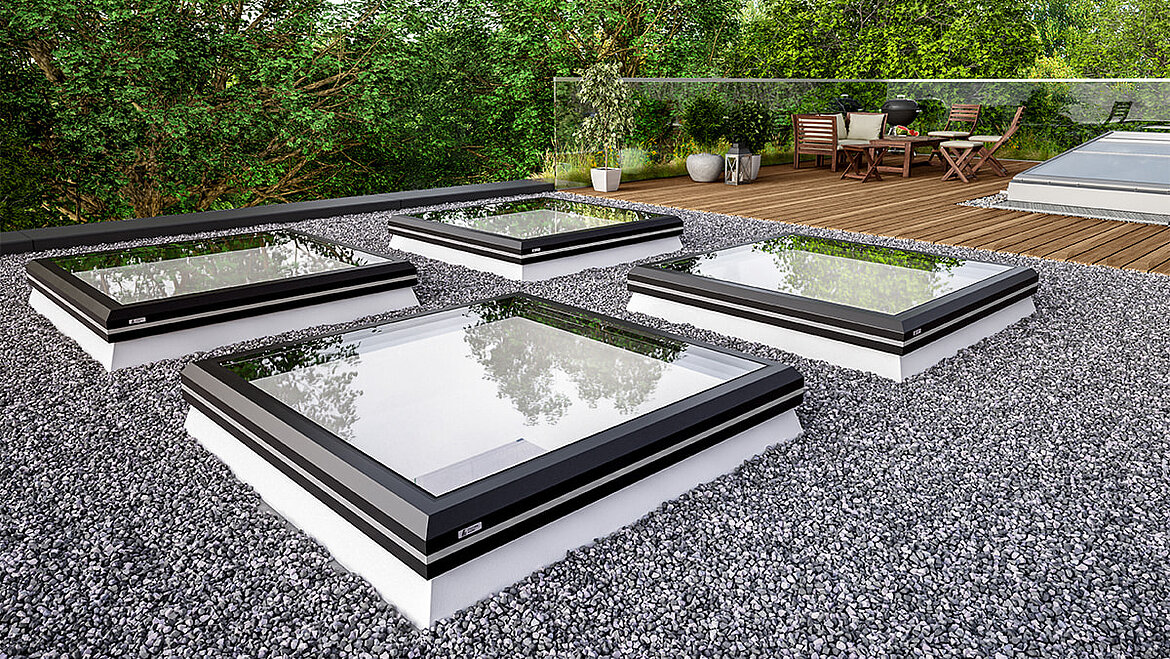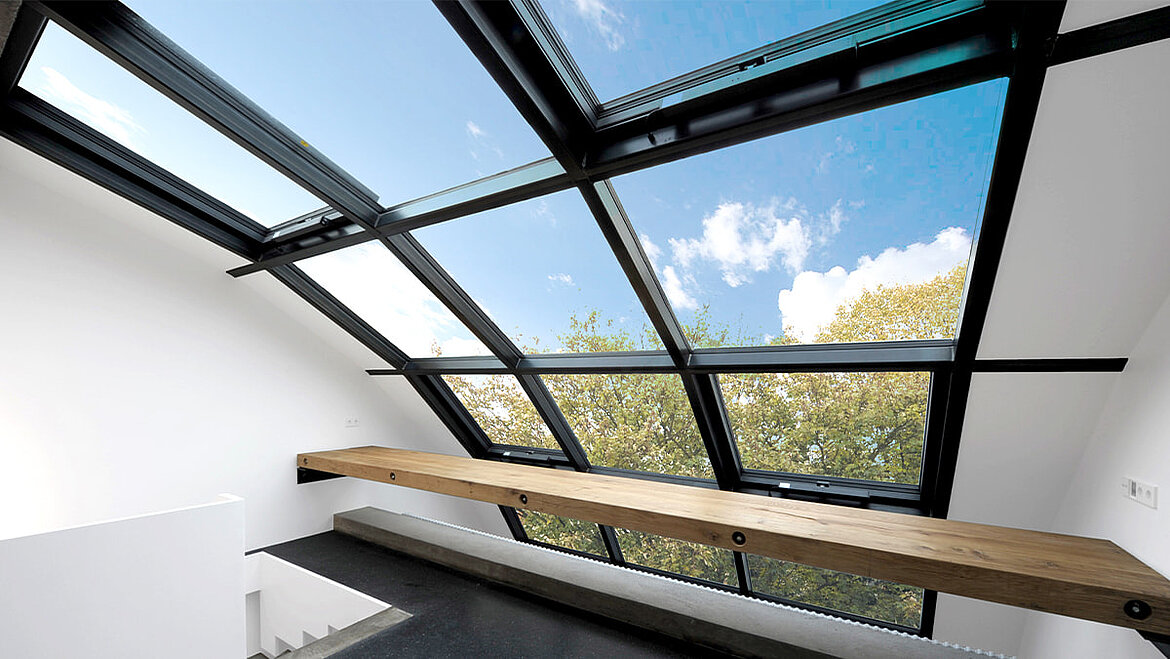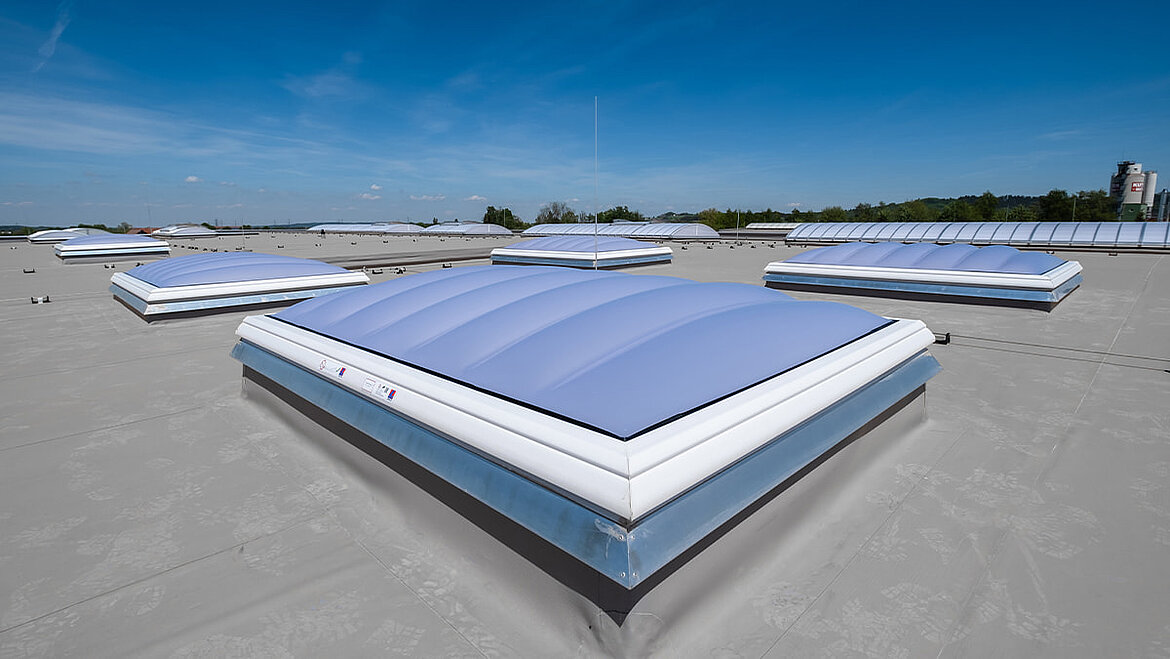Special properties of incident daylight are of particular importance for health and safety in the workplace. In this free white paper, you can find out all the important facts about
- daylight and artificial light
- legal requirements
- and the illumination of workplaces!


